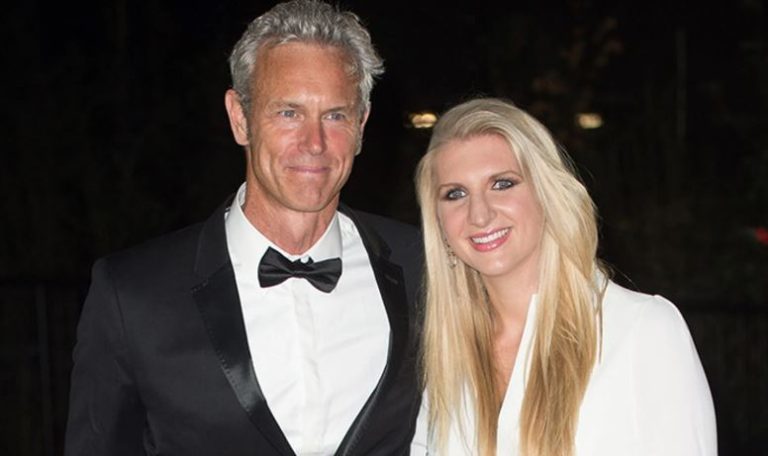What exactly is a therapeutic relationship, and why does it hold such significance in counselling and therapy? A strong connection between a therapist and client can greatly impact the success of therapy sessions, fostering trust and emotional growth.
In this article, we’ll explore the definition of a therapeutic relationship, its core components, benefits, and common challenges.
Additionally, we’ll provide real-world examples and strategies to strengthen this vital bond for better outcomes.
What Is Therapeutic Relationship?

A therapeutic relationship refers to the professional connection between a therapist and their client, aimed at fostering trust, understanding, and healing.
This bond forms the foundation of effective counselling or psychotherapy, as it allows clients to feel supported and valued in a safe and confidential environment.
The concept dates back to the work of Sigmund Freud but has since evolved into a core aspect of modern therapeutic practices. It encompasses key elements like trust, empathy, and mutual respect, which facilitate open communication and self-exploration.
In 2024, the importance of therapeutic relationships has been further recognised, especially in light of rising mental health challenges.
With advances in neuroscience and psychology, research highlights how a positive client-therapist dynamic can improve emotional well-being, enhance coping skills, and foster personal growth.
Whether in counselling, psychotherapy, or even coaching, a strong therapeutic relationship is the cornerstone of effective care.
Why Is the Therapeutic Relationship Important in Counselling?
The therapeutic relationship plays a pivotal role in the success of counselling. It serves as a secure base where clients feel emotionally safe to express their thoughts, fears, and vulnerabilities without judgment.
This relationship fosters trust, allowing therapists to guide clients through self-discovery and problem-solving.
Research in 2024 highlights that a strong therapeutic relationship improves treatment outcomes, boosts client engagement, and accelerates progress.
When clients feel connected to their therapists, they are more likely to open up, leading to a deeper understanding of their issues and more effective solutions.
Key reasons why the therapeutic relationship is vital in counselling:
- Trust-building: Encourages openness and honesty.
- Emotional safety: Provides a non-judgmental space for sharing.
- Improved outcomes: Enhances the effectiveness of couples therapy.
- Empowerment: Helps clients regain control over their lives.
Ultimately, this relationship lays the groundwork for lasting change, offering clients the support and guidance they need to overcome personal challenges.
What Are the Core Components of a Therapeutic Relationship?

The therapeutic relationship is built upon several core components that ensure its effectiveness in fostering personal growth and healing.
These elements are crucial for establishing a safe and collaborative environment between the therapist and client.
In 2024, experts have emphasized the following components as fundamental to a strong therapeutic bond:
- Trust: The foundation of the relationship, enabling clients to share openly.
- Empathy: Therapists’ ability to understand clients’ feelings and perspectives.
- Respect: Honouring clients’ values, boundaries, and experiences.
- Active listening: Providing full attention to clients’ words and emotions.
- Congruence (authenticity): Therapists being genuine and transparent.
These components collectively create an atmosphere of acceptance and understanding. As clients feel heard and validated, they become more willing to engage in self-reflection and explore their challenges.
Moreover, a focus on empathy and respect ensures that the client feels valued and empowered throughout the therapeutic process.
How Does a Strong Therapeutic Alliance Benefit Clients?
A robust therapeutic alliance significantly enhances the client’s journey toward healing and growth. This collaborative relationship enables both therapist and client to work toward shared goals, making the therapeutic process more effective.
In 2024, studies have shown that a strong therapeutic alliance positively impacts:
- Emotional well-being: Clients feel supported, reducing feelings of isolation.
- Coping skills: Builds resilience to handle stress and adversity.
- Self-awareness: Encourages deeper understanding of thoughts and behaviours.
- Motivation: Increases commitment to the therapeutic process.
Clients with a strong alliance report higher satisfaction and faster progress in therapy. They are more likely to open up, explore difficult emotions, and adopt healthier coping strategies.
For therapists, this bond provides valuable insights into their clients’ needs, allowing them to tailor interventions effectively.
What Factors Influence the Development of a Therapeutic Bond?

Several factors determine the strength of a therapeutic bond, making it essential for therapists to consider these elements during counselling sessions. Understanding these factors helps in nurturing a relationship that promotes trust and collaboration.
Key factors influencing the therapeutic bond include:
- Therapist’s skills: Effective communication, empathy, and active listening.
- Client’s readiness: Willingness to engage and commit to the process.
- Cultural sensitivity: Respect for the client’s cultural background and values.
- Clear boundaries: Maintaining professionalism and mutual respect.
- Consistency: Regular sessions and reliable support build trust.
In 2024, there has been increased focus on cultural competence and personalised approaches to strengthen the therapeutic bond. When both therapist and client work together, considering these factors, the relationship deepens, paving the way for transformative outcomes.
How Do Therapists Build Trust in a Therapeutic Relationship?
Trust is the cornerstone of any therapeutic relationship. Without it, clients may struggle to open up, making it difficult to address their concerns effectively. Therapists employ several strategies to build and maintain trust throughout the counselling process.
Key trust-building strategies include:
- Confidentiality: Assuring clients their shared information remains private.
- Consistency: Being reliable and punctual in sessions.
- Non-judgmental attitude: Creating a safe space for honest expression.
- Genuine interest: Showing care and concern for the client’s well-being.
In 2024, therapists are using advanced techniques like mindfulness and self-disclosure (when appropriate) to strengthen trust. These approaches foster openness and encourage clients to explore their feelings and challenges more deeply, enhancing the therapeutic relationship.
What Role Does Empathy Play in Therapeutic Engagement?

Empathy is a vital component of therapeutic engagement, as it allows therapists to understand and validate their clients’ emotions. By showing empathy, therapists create a sense of connection, making clients feel seen and valued.
Research in 2024 underscores the importance of empathy in achieving positive therapy outcomes. Empathetic therapists help clients:
- Feel understood: Reducing emotional distress.
- Build self-esteem: Validating their experiences and emotions.
- Enhance communication: Encouraging honest and open dialogue.
Empathy fosters a collaborative environment, enabling clients to trust the process and delve into their personal challenges. When clients feel truly understood, they become more receptive to therapeutic interventions and are more likely to achieve lasting growth.
How Can Boundaries Enhance the Therapeutic Connection?
Setting clear boundaries is essential for maintaining a healthy and professional therapeutic relationship. Boundaries ensure that both the therapist and client understand their roles, fostering mutual respect and trust.
Benefits of clear boundaries in therapy include:
- Safety: Clients feel secure knowing the relationship is professional.
- Focus: Keeps sessions goal-oriented and productive.
- Respect: Reinforces the importance of personal limits.
In 2024, therapists are increasingly focusing on digital boundaries, especially with the rise of virtual counselling.
Establishing boundaries around communication methods, session timings, and personal disclosures ensures that the therapeutic connection remains strong and focused on the client’s growth.
What Are Common Challenges in Building Therapeutic Relationships?

Therapists often face challenges when building therapeutic relationships, especially with clients who may be hesitant or distrustful. Identifying these challenges early can help address them effectively.
Common challenges include:
- Client resistance: Reluctance to open up or engage in therapy.
- Cultural differences: Misunderstandings due to varying cultural norms.
- Emotional barriers: Clients suppressing emotions or avoiding vulnerability.
In 2024, training programs are focusing on equipping therapists with tools to overcome these challenges.
Techniques like motivational interviewing, cultural competence, and trauma-informed care are proving effective in bridging gaps and building stronger therapeutic relationships.
How Can the Therapeutic Relationship Be Improved Over Time?
Therapeutic relationships require ongoing effort to strengthen and maintain. As therapy progresses, therapists and clients can work together to enhance their bond for better outcomes.
Ways to improve the therapeutic relationship include:
- Regular feedback: Open discussions about the progress and quality of the relationship.
- Flexibility: Adapting techniques based on the client’s needs.
- Continuous learning: Therapists staying updated with new approaches and methods.
In 2024, emphasis on personalised care has shown that tailoring therapy to each client’s unique preferences and challenges significantly enhances the therapeutic relationship.
By fostering ongoing trust and communication, therapists can help clients achieve their goals more effectively.
Conclusion
The therapeutic relationship is a cornerstone of successful counselling and psychotherapy. It fosters trust, understanding, and collaboration, creating a safe space for clients to explore their emotions and challenges.
By focusing on empathy, respect, and clear boundaries, therapists and clients can build a relationship that promotes healing and personal growth.
Whether you’re a therapist or someone seeking support, understanding the importance of this bond can lead to more fulfilling therapeutic experiences and lasting positive changes.
FAQs
Why is trust crucial in a therapeutic relationship?
Trust enables clients to share openly and honestly, forming the foundation for effective therapy.
How does empathy benefit therapy sessions?
Empathy helps clients feel understood and validated, encouraging open communication and self-reflection.
What are common challenges in building therapeutic relationships?
Challenges include client resistance, cultural differences, and emotional barriers that hinder openness.
How can therapists maintain boundaries?
Therapists maintain boundaries by establishing clear expectations and adhering to ethical guidelines.
What role does feedback play in improving the relationship?
Feedback helps both the therapist and client assess progress and address any issues to strengthen their bond.
Can the therapeutic relationship improve over time?
Yes, with consistent effort, mutual respect, and clear communication, the bond can grow stronger.






